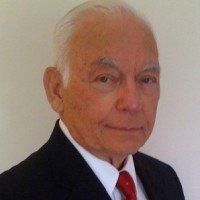Major General Jasper Welch served for 31 years in the United States Air Force before retiring in 1983 in the rank of Major General. In the decades the followed, he has worked as a consultant for government and industry, including serving as an advisor to the White House Office of Science and Technology Policy, the Defense Science Board, and the Los Alamos National Laboratory.
Major General Jasper Welch served for 31 years in the United States Air Force before retiring in 1983 in the rank of Major General. He has since worked as a consultant for government and industry.
His time in the U.S. Air Force included assignments at the Lawrence Livermore National Laboratory, the Air Force Weapons Laboratory, the RAND Corporation, Air Force Headquarters, the Office of the Secretary of Defense and the National Security Council. During his military career he received the Air Force Commendation Medal, the Legion of Merit (awarded three times) and the Distinguished Service Medal (awarded twice). Shortly after retirement he was awarded the Wanner Prize of the Military Operations Research Society in recognition of lifetime achievement.
Since 1983 he has been a consultant for government and industry. For the government he has served on the Air Force Scientific Advisory Board, the NASA Advisory Council, the Science Advisory Group on Effects of the Defense Nuclear Agency and for many years as Chairman of the Military Advisory Panel to the Director of Central Intelligence. Additionally, he has been an advisor to the White House Office of Science and Technology Policy, the Defense Science Board, the Secretary of the Air Force and the Office of the Secretary of Defense. For industry he has been a technical consultant for leaders of several major aerospace corporations and laboratories, including SAIC, the Los Alamos National Laboratory and Lawrence Livermore National Laboratory.
General Welch was elected by his peers to be a member of the Council on Foreign Relations (1976) and the National Academy of Engineering (1980).
He has published a number of landmark professional journal articles and the graduate text, “The Atomic Theory of Gas Dynamics” (1966).
He received a Ph.D. from the University of California, Berkeley in 1958.

